Unchecked Designation of Origin
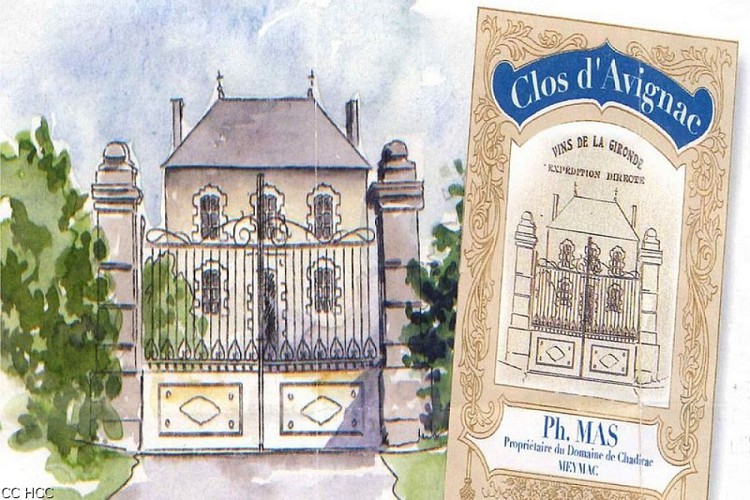
Description
If emigration often rhymes in Limousin with mason, this walk reveals another less well-known sector, that of wine.Departure: in front of the town hall, head right towards the cemetery. Go down an alley on the left to the chapel and turn right onto the path. Go over the bridge and at the forest crossing turn right, then, very soon after, turn left up the trail to return to the road. Follow it to the right for 400 m.Follow the path to the left. Then take the road to the right towards Chavetourte.In Chavetourte, turn left at the first barn (go ahead for a few metres to see the merchant's house, the cross and the place where animals were shod). Outside the circuit: a round trip to the Mas (panoramic view of the Monts d'Auvergne) and Le Massoubre (bakeries, old chestnut tree).The trail crosses a stream. A few metres later, leave the main path and turn left onto a trail that climbs towards La Mongie. Take the road on the right (go a few metres to the left towards the bakery and the view of the Massif du Sancy).At the edge of the village, take a trail on the right which passes in front of a drinking trough; continue to the left at the old bakery. Find the road and follow on the right until you reach the Bachellerie.In the village, turn left and go back to the fountain-washhouse, passing in front of a merchant's house. Return to the centre of the village: take the road to the left and, at the last house, follow the path to the right. Find the road on the right that returns to Davignac.
Technical informations
5.6 km
|
max. 747 m
min. 628 m
| |||
Altimetric profile
Starting point
Steps
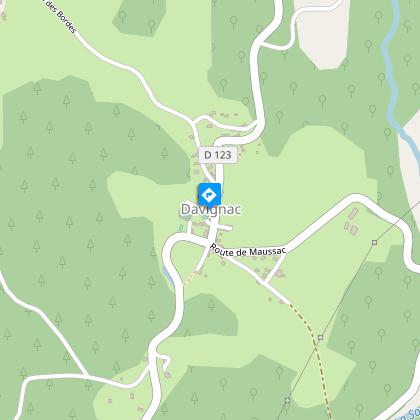
Le bourg
Le bourg de Davignac offre un ensemble architectural remarquable avec, outre sa mairie-école typique de nos campagnes, l’église St-Sernin (retable classé), le château des Ventadour et ses dépendances agricoles et la chapelle Notre-Dame.
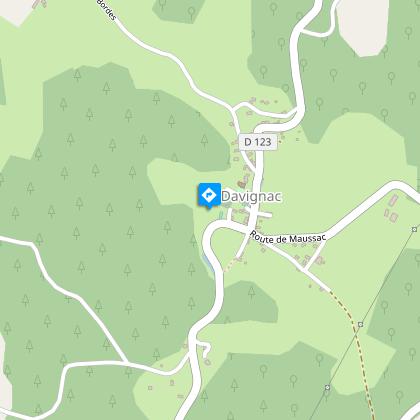
Le pont gallo-romain
Même s’il n’est pas sûr que ce petit pont enjambant le ruisseau du Jacquet date de l’époque gallo-romaine, ce site apporte une note de fraicheur avant la montée en sous-bois.

Village de Chavetourte
Les villages de la Haute-Corrèze avaient tous une vocation agricole. La traversée de ces hameaux constitue toujours un moment de découverte unique lors d’une randonnée : granges, maisons de maître, croix, petit patrimoine... A Chavetourte, notez le métier à ferrer récemment restauré et la croix. Derrière cette dernière, se trouve une première maison de négociant.
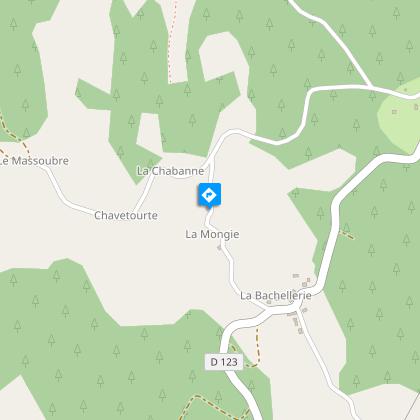
Les Monts d'Auvergne
Dans le village de la Mongie, ne manquez le petit détour vers le fournil (linteau de fenestrou sculpté) et le panorama sur les Monts d'Auvergne. Le massif le plus à gauche est le Sancy, plus haut volcan de France métropolitaine: le Puy de Sancy culmine à 1885 mètres d’altitude. Sur la droite, le massif volcanique du Cantal, vestige du plus grand volcan d'Europe.
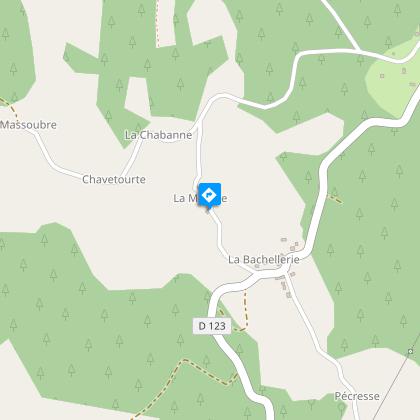
Le village de La Mongie
Belle maison de marchand de vin sur votre droite. C’est au village de Laval situé à Davignac que Jean Gaye-Bordas, reconnu comme le père du négoce en vin, naquit en 1826. Il commence comme simple colporteur de parapluies et de lampe à pétrole dans le nord de la France. Il développe ensuite un négoce en vins de Bordeaux qu’il commercialise jusqu’en Wallonie. Et voilà comment une génération de Corréziens va connaitre la réussite qui permettra même à certains de racheter des vignobles du Bordelais.
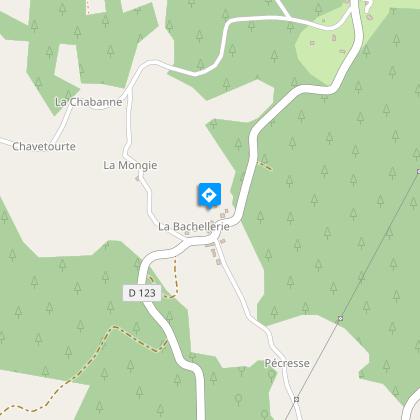
Village de la Bachellerie
Dans le village, petit aller-retour vers une jolie fontaine. A nouveau une belle maison de négociant. A partir du XIXème siècle, ces derniers construisent de belles demeures cossues. Certains y voient une volonté d’afficher leur réussite, d’autres la nécessité de crédibiliser leur négoce : en effet, ces propriétés à l’allure bordelaise illustraient parfois les étiquettes de leurs bouteilles de vin.
Points of interest

The village
The village of Davignac offers a remarkable wealth of architecture with, in addition to its town hall-school typical of our countryside, the St-Sernin church (listed altarpiece), the Château des Ventadour and its agricultural outbuildings and the chapel of Notre-Dame.
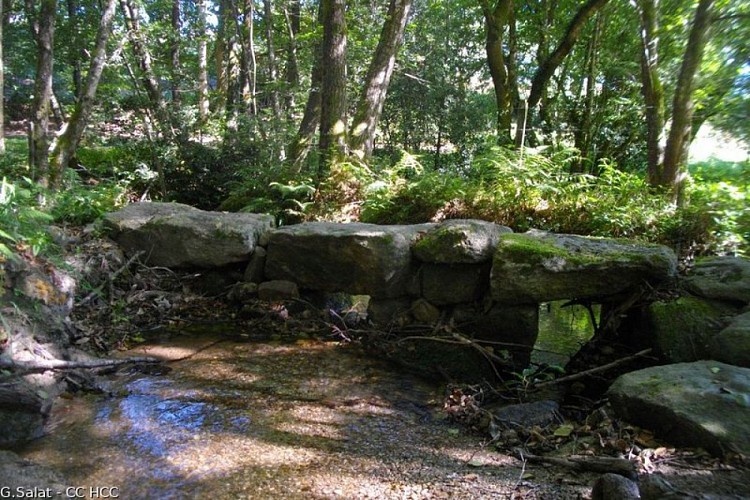
The Gallo-Roman bridge
Although it is not certain that this small bridge spanning the Jacquet stream dates back to the Gallo-Roman period, this site brings a note of freshness before the ascent into the woodland.
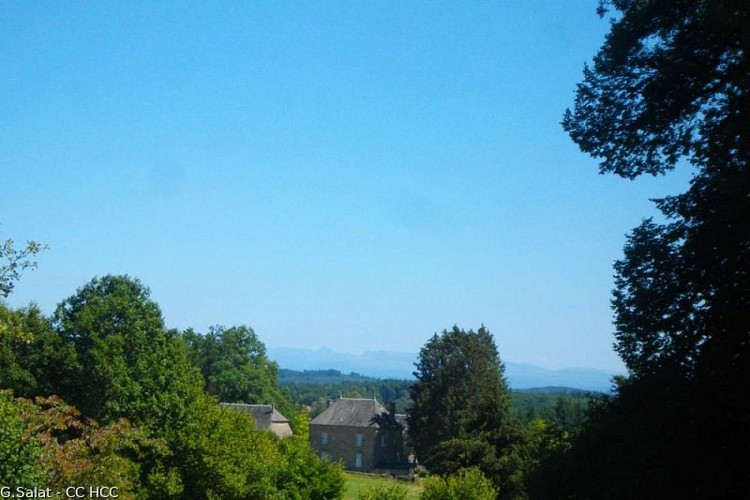
The mountains of Auvergne
In the village of La Mongie, be sure to make a small detour to the bakery (carved window lintel) and the viewpoint offering a remarkable view of the highest volcano in mainland France, the Puy de Sancy. At 1885 metres above sea level, this summit is the highest point of the Massif Central. The two streams, the Dore and the Dogne, originate there and their confluence forms the Dordogne.
Additional information
Advised parking
Car park at Place de la Mairie in Davignac
Ambiance
In Haute-Corrèze in the 19th century, agriculture did not allow families to ensure their survival. So, emigration seemed to be the solution. A network of Bordeaux wine merchants was set up, mainly in the north of France. This walk, rich in heritage, sums up this story, and we pass without missing a beat from a remarkable traditional granite building typical of our countryside to the beautiful, opulent residences built by these wealthy merchants.
Arrival
Car park at Place de la Mairie in Davignac
Departure
Car park at Place de la Mairie in Davignac
